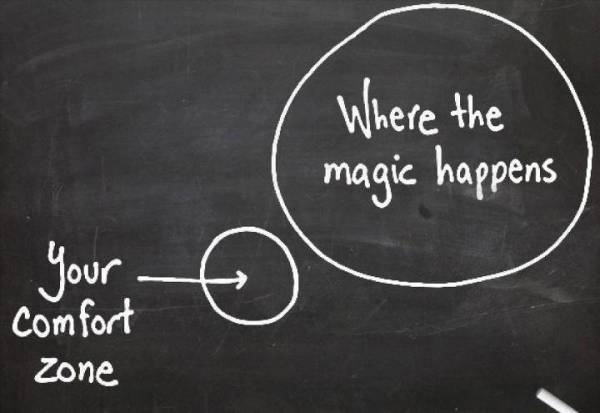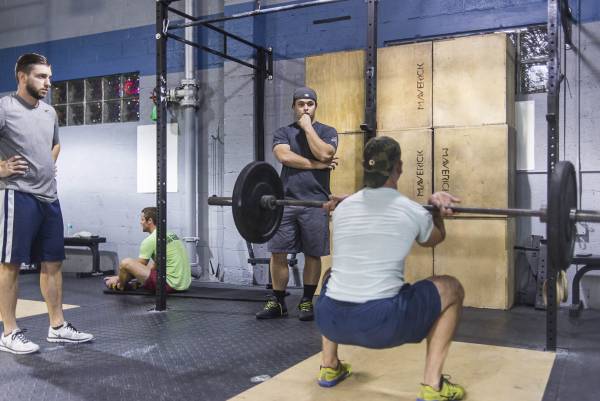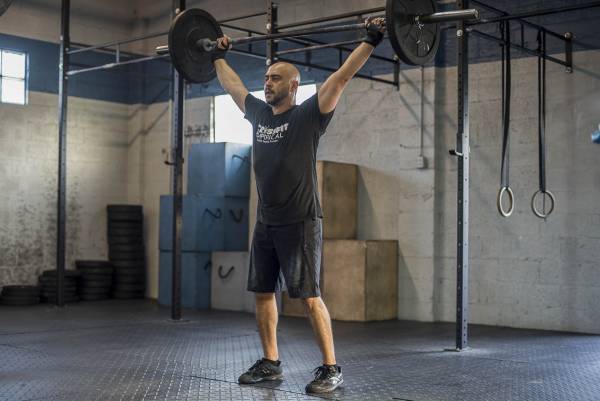Whatever your health and fitness goals, the benefits of lifting weights are well documented. You can become a leaner, stronger, faster, more confident and mentally tough version of yourself. What’s not to love?
Unfortunately, nothing worth having comes easy. To enjoy the benefits that come with lifting weights, you need to put in the work first. Here are three signs lifting might not be the magical solution you’ve been looking for.
Whatever your health and fitness goals, the benefits of lifting weights are well documented. You can become a leaner, stronger, faster, more confident and mentally tough version of yourself. What’s not to love?
Unfortunately, nothing worth having comes easy. To enjoy the benefits that come with lifting weights, you need to put in the work first. Here are three signs lifting might not be the magical solution you’ve been looking for.
You’re Too Attached to Your Comfort Zone
Do you prefer to stick to an established routine, rather than seek out new adventures?
Do you thrive under certainty, relying on predictable outcomes to get you through any given situation?
Does the thought of trying something new fill you with dread, causing you to revert back to a tried and tested approach?
If you answered “yes” to the above questions, it’s likely you’re too attached to your comfort zone. If Internet memes are to be believed, the comfort zone isn’t where the magic happens, but is this claim substantiated in real life?
According to Alasdair White1, the comfort zone is:
…a behavioural state within which a person operates in an anxiety-neutral condition, using a limited set of behaviours to deliver a steady level of performance…
In other words, people attached to their comfort zone do everything in their power to minimise stress levels. On the surface, this may seem like a good idea. We are often warned to avoid unnecessary stress. In reality, a little anxiety can act as a catalyst, providing you with the motivation you need to push yourself that little bit harder.

If Internet memes are to be believed, the comfort zone isn’t where the magic happens.
At the gym, particularly if you’re working towards particular goals, staying inside your comfort zone provides little benefit. At best, it will take you longer to accomplish your goals and, at worst, it could halt your progress entirely.
If your goal is to get stronger, at some point you’re going to have to increase either the load on the bar or the number of reps. Whenever you do this, you’re stepping out of your comfort zone. There’s a degree of uncertainty. Will you make the lift, or not?
If you can’t get comfortable outside your comfort zone, the anxiety will get the better of you, and instead of using the adrenaline to power your lift, you’ll find it hard to focus.
How to Do It: To counteract this, set realistic and achievable goals. To achieve them, find a lifting program you feel confident with, taking small steps outside your comfort zone each session.
You Find It Difficult to Address Your Weaknesses
Are you easily offended when those around you offer constructive advice to help you improve?
Do you actively seek out information to help you achieve your goals, or do you stick to what you’ve always known?
Do you regularly train through injury, or do you take time out to recover and find out what went wrong?
The ability to address your weaknesses is fundamental to progress and growth, both inside and outside the gym. Understanding your shortcomings is the first step to overcoming them. How can you improve your performance, if you’re not willing to accept there’s room for improvement?
It doesn’t matter what level you’re currently at, there’s always room to improve. Whether you’re an elite athlete, new to your sport, or a coach, you will have gaps in your ability. It’s your ability to acknowledge them, address them, and overcome them that will enable you to get stronger.

When it comes to lifting, there’s an almost endless list of weaknesses that could be holding you back. Problems with technique are a common deficiency, and can be the most difficult to overcome. Learning the correct technique can be hard work, with conflicting advice pointing you in different directions. Should you squat with your knees in or out? Is it acceptable to round your back when deadlifting?
“Not only will your shortcomings catch up with you eventually, but they’ll also be harder for you to overcome as time passes.”
These questions will elicit different responses from the experts. Rather than dismissing them as unimportant, it’s necessary to understand the theory behind each point of view, and apply your new knowledge to your own technique. As well as problems with technique, issues such as limited range of motion, or a lack of mental toughness can impede your development.
When you’re progressing steadily, it can be tempting to ignore your weaknesses and stick to what you already know. This isn’t a smart approach. Not only will your shortcomings catch up with you eventually, but they’ll also be harder for you to overcome as time passes. Incorrect technique can cause you to lift inefficiently, developing muscular imbalances and risking injury.
How to Do It: If you don’t want to be held back by your own limitations, make a habit of evaluating your own performance, seek advice from your peers, and regularly set goals to encourage self-improvement.
You’re Not Willing to Commit
Do you find it difficult to make time for lifting, making excuses when you miss a session in the gym?
Have you tried lots of training programs, but haven’t yet found one that delivers consistent results?
Do you regularly miss lifts, but feel as though you could have made it if you’d only been a little more confident?
This is quite simple: if you’re not willing to commit, you’re not going to gain much from your lifting endeavours. This shouldn’t come as a surprise. Commitment is fundamental to success in all areas of life. If you’re serious about lifting, there are three layers of commitment you must provide in order to get results.

Firstly, you need to commit to training regularly. If you train inconsistently, you’ll get inconsistent results. If you’re always making excuses, it’s time to reevaluate.
To create a training schedule that works for you, take into consideration your job and other commitments. Don’t forget to include a sufficient number of rest days. Avoiding burnout is vital when it comes to your ability to train consistently. An hour in the gym is just four percent of the day, so unless you’re injured or exhausted, keep to your schedule whenever possible.
How to Do It: From time to time, life will inevitably get in the way, and you’ll have to miss a session. When this happens, try to reschedule, rather than miss the session entirely.
You also need to commit to a training program. There are hundreds of approaches out there, and you can’t do them all. When possible, work with a coach to find the right program or have a training schedule developed for you.
“If you jump quickly from one program to another, you’re not doing yourself any favours.”
When you commit to a program, you must commit to it fully, even the parts you’re not sure about or don’t look forward to. If you jump quickly from one program to another, you’re not doing yourself any favours.
How to Do It: Building strength takes time, so it’s necessary to complete at least a full programming cycle before assessing whether a program is working for you.
Finally, you need to commit to the lift. Treat each lift, no matter how big or small, in exactly the same way. Once you’ve found the right program, this should be straightforward. A good program will always challenge you, but should be simple enough for you to feel that each set is achievable.
How to Do It:Approach the bar with confidence, set up properly, and dedicate yourself to the lift.
Summary
Lifting weights isn’t a walk in the park. If you’re looking for an easy-going hobby, find something else. That said, if you’re comfortable talking about your weaknesses, aren’t afraid of commitment, and regularly push yourself, it might turn out to be one of the best decisions you ever make.
If you enjoyed this article, take a look at:
References:
1. White, A., “From Comfort Zone to Performance Management” White & MacLean Publishing. 2009
Photos 1, 3, & 4 courtesy ofCrossFit Empirical.






